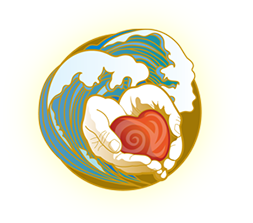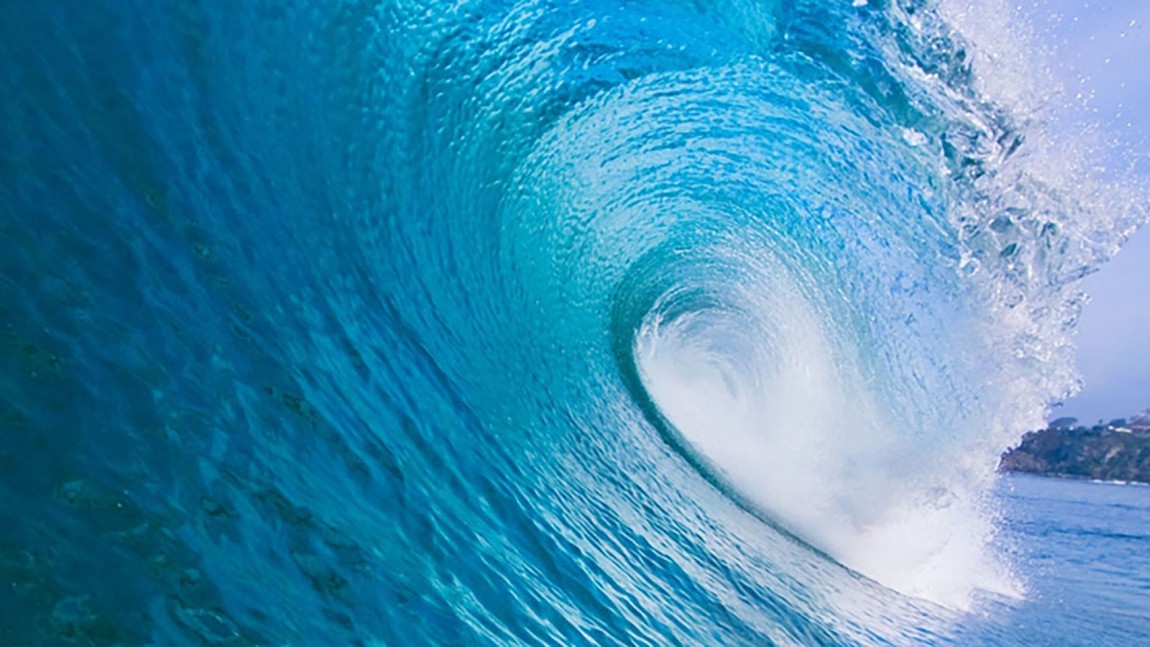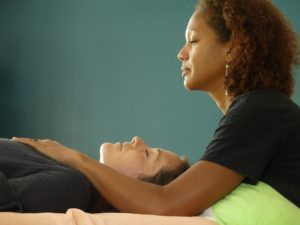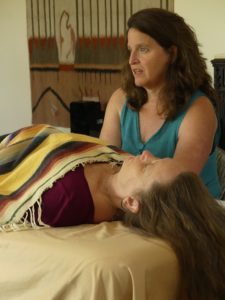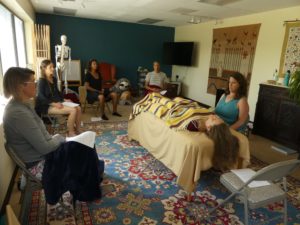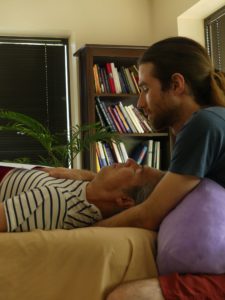About the Training
A biodynamic approach to Craniosacral Therapy entails a real perceptual shift from the patterns that conditions present within the system to the inherent forces that organize them.
~Franklyn Sills~
Craniosacral therapy is an elegant and effective system of healing based on the discovery by Dr. William Sutherland that there exists a subtle micro-movement in the body. Through extensive experimentation, early osteopathic physicians noticed that when this motion is in full expression, many conditions improve. “Craniosacral” also refers to the significance of the central structures of the body including the cranium, spine, and sacrum.
The biodynamic paradigm, which underlies our approach to craniosacral therapy and all courses at the School of Inner Health, focuses on amplifying the inherent health and healing capacity of the system. Though health is always present, it can be obscured by overwhelming challenge.
Skilled biodynamic craniosacral practitioners catalyze the healing process with their informed presence and attention, helping to facilitate well-being anywhere in the human body. They are trained to recognize a client’s whole body as inherently well, regardless of symptoms or injuries present. They also have a solid knowledge of anatomy and can recognize both the patterns of restriction and the patterns of health in bones, tissues, and fluids (including the cerebrospinal fluid).
In this training, you’ll delve deeply into the core elements of the biodynamic approach to craniosacral therapy. The training is taught in a layered fashion, exploring anatomical relationships between fluid, tissue, and bone. We focus on the relationships rather than structures or functions in isolation. The training is structured to reflect the development of the human body and its systems. You will begin by learning to recognize and respond to formative energetic forces and the life force in our bodies. You will then explore fluids, tissues, the nervous system, embryology, the cranial system, and other aspects of the anatomy and physiology of the human body.
The course is filled with endless discoveries about the body and ourselves. As a graduate of this program says: “If you took this class for the personal growth alone, it would be worth every penny.” Students are encouraged throughout the course to challenge what they’ve previously believed and follow what interests them. The course is taught in a way that intends to spark curiosity and build confidence.
Students learn to refine subtle levels and layers of perception that are uncommon in the modern worldview. In a world where we see everything as separate, the ability to make connections is essential. This is the ultimate goal of the course: for students to have a greater facility with, and understanding of, the whole human body, as well as the ability to meet each body, person, and story with skill and presence. The world is alive, and a myriad of relationships are occurring in our body and environment every moment. Students learn to reconnect to their own aliveness, to their own living vitality, and to the vitality in the living world. This is an essential skill for a Biodynamic Craniosacral therapist and for any one working in the field of Biodynamics.
In this training, you will:
- Learn experientially through hands-on work, exercises, and lecture in a relaxed, safe, supportive environment
- Deepen and expand your subtle, therapeutic, relational, and non-invasive palpation skills
- Develop essential skills that enable you to track the human system in its expressions of health as well as patterns of resistance, imbalance, and disease
- Learn to palpate the three subtle craniosacral ordering rhythms and tides
- Learn safe and effective approaches to a variety of human conditions
- Explore in depth aspects of craniosacral therapy, including primary respiration, inherent Health, stillpoints, and the inherent treatment plan
- Discover and experience how primary respiration generates and maintains function
- Go in depth into the topics of the relational field, biodynamics, fluids, tissues, nervous system, embryology, the cranial system, and working with birth and death
- Explore anatomical relationships between fluid, tissue, and bone
- Discover how to palpate the formative forces of the human system
- Learn to embody your awareness at a deeper level
- Learn to palpate the difference between when an experience or symptom is held in stasis or inertia and when it is in relationship to its inherent Health, often called Dynamic Stillness
- Learn to skillfully invite physical and emotional life experiences that have become isolated by pain, strain, disease or trauma to find their way back from isolation to wholeness
- Work directly with the nervous system and learn to amplify the cerebral spinal fluid that bathes the spine and brain, supporting improved nervous system function
- Learn to support clients in transformation and personal growth
The School of Inner Health’s Craniosacral Biodynamics Certification Training leads to RCST® (Registered Craniosacral Therapist) practitioner status. The training consists of 51 days, divided into ten modules of five days each, held roughly two months apart. Certification is for 700 hours of training: 350 in-class hours and 350 hours in practice sessions and independent study. Module 1 may be taken independently, but for certification purposes and in support of group dynamics, those desiring to complete the training and be eligible for RCST® status should plan to take the ten modules concurrently.
Training Venue
7550 W. Yale Ave.
Suite B-204
Denver, CO 80227
Training Start Date(s)
The dates listed here are 3 options for the Intro to BCST/Module 1 of the training. Module 1 can be taken as a stand-alone introductory course with no obligation to continue with the full training. Invitations to enroll in the full certification training will be extended after completion of this Intro course.
Intro/Module 1 Online Nov 1, 3, 4, 2024 & On-site February 22-24, 2025
Intro/Module 1 Online Feb. 8, 9, 11, 2025 & On-site February 22-24, 2025
Intro/Module 1 Online May 3, 4, 5, 2025 & On-site May 31, June 1, 2, 2025
(Online Schedule: 9:30-10:45a / 11:15a-12:30p / 2:30-3:45p / 4:15-5:30p – On-site Schedule: 9:30a – 6p with breaks and lunch)
* Please note: Modules 2-10 of the full Professional Practitioner Certification Training are all 5 days on-site here at the school in Denver, Colorado
Module 2 – Sept 10-14, 2025
Fluid Dynamics
Module 3 – Dec 10-14, 2025
Embryology, Epigenetics & Spinal Vertebrae
Module 4 – March 11-15, 2026
The Autonomic Nervous System
Module 5 – June 10-14, 2026
Tissues: Motility & Mobility
Module 6 – August 26-30, 2026
Cranial Bones, Brain & Sinuses
Module 7 – November 11-15, 2026
The Gut, The Face and Viscera
Module 8 – Feb 10-14, 2027
TMJ, Stress, and the Central Nervous System
Module 9 – April 28-May 2, 2027
The Pelvis, Stages of Birth and Ignition
Module 10 – July 14-18, 2027
Integration, Completion & Graduation
Training Lead Instructor
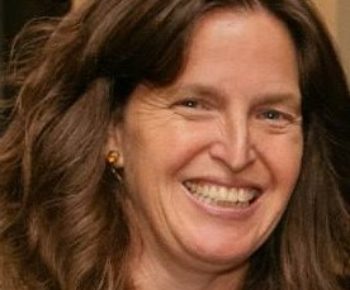
Margaret Rosenau
Training Support Instructor

Vanessa Lillie
We strongly recommend that students enrolling in the Introduction to Biodynamic Craniosacral Therapy/Module 1 course receive at least one biodynamic craniosacral therapy session from a registered biodynamic craniosacral therapist (RCST) prior to attending the course. You can find practitioners HERE at the BCTA/NA website.
Additionally, it is highly recommended that any students who are invited to register for the full certification training receive at least 3 biodynamic craniosacral therapy sessions from a registered biodynamic craniosacral therapist (RCST).
